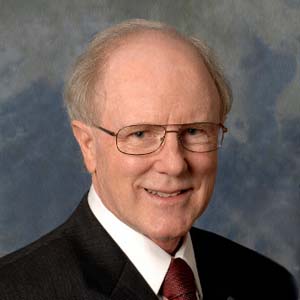Larry Hornbeck

Professor, National Academy of Engineering Member
larry.hornbeck@utdallas.edu
Phone: 972-883-4628
Office: BSB 13.905
800 West Campbell Rd.
Mailstop: BSB13
Richardson, TX 75080-3021
Education
PhD, Physics, Case Western Reserve University, 1974
MS, Physics, Case Western Reserve University, 1968
BS, Physics, Case Western Reserve University, 1965
Awards
- Elected to the National Academy of Engineering, 2007
- Fellow of the Society of Motion Picture and Television Engineers (SMPTE), 2015
- Fellow of the Institute of Electrical and Electronics Engineers (IEEE), 2006
- Fellow of the International Society for Optical Engineering (SPIE), 2002
- The Academy Award of Merit (Oscar statuette) from the Academy of Motion Picture Arts & Sciences (AMPAS), 2015
- Named to EE Times Hall of Fame – Forty visionaries who defined our world in the last forty years, 2012
- Inducted into the National Inventors Hall of Fame® 2009
- The David Sarnoff Medal Award from the Society of Motion Picture and Television Engineers (SMPTE) 2002
- Karl Ferdinand Braun Prize from the Society for Information Display (SID) 1999
- Engineering Emmy Award from Academy of Television Arts & Sciences ATAS, (1998)
Overview
Dr. Larry Hornbeck joined the faculty of The University of Texas at Dallas in early 2017 following a distinguished career at Texas Instruments (1973-2017). There he developed charge-coupled devices (CCD) image sensors, uncooled infrared radiation (IR) detector arrays and reflective spatial light modulators (SLMs), the latter based on what is known today as microelectromechanical systems (MEMS) technology.
Hornbeck is best known for his invention and refinement of the digital micromirror device (DMD), a high-speed SLM that modulates light with the precision of time division, a unique characteristic of this game-changing technology. Known commercially as the DLP chip, the DMD is the basis for disruptive innovations by Texas Instruments across a wide range of display and nondisplay applications that include digital cinema, picoprojection, maskless lithography, 3D printing, automotive HUD systems and 3D machine vision.
In 1983, while working in the Central Research Laboratories of Texas Instruments, Hornbeck began developing analog SLMs based on complementary metal-oxide-semiconductor or CMOS-addressable, cantilever-hinged micromirrors. By 1986, he had developed and patented the first-ever manufacturing methods for integrating high-density arrays of micromirrors on an integrated circuit in a conventional wafer fab. However, discouraged by the poor analog performance of these analog devices, he made a pivotal decision in 1987 to attach the micromirrors to torsional suspensions and actuate them into contact with rotation stops. This made it possible to simultaneously manipulate light with the precision of time division by pulse-width modulation, to increase the optical efficiency and to reduce the address voltage. And so, the Digital Micromirror Device was born, U.S. Patent 5,061,049, Spatial Light Modulator and Method, Inventor L.J. Hornbeck.
Altogether, Hornbeck holds 38 U.S. patents in DMD (34), CCD (3) & IR (1) detector array technologies, including the foundational patents for the architecture, addressing, manufacturing and surface passivation of DMD technology.
Research Interests
The Digital Micromirror Device (DMD), an optical digital microelectromechanical systems (MEMS) technology, is perhaps the most complex and challenging multidisciplinary technology in the semiconductor world — the merging of micromechanical, optical and electrical functionalities at high densities, onto a silicon chip together with high-speed CMOS control circuitry. The chip itself is packaged in a windowed, life support system.
Consider the sheer number of micromirrors and switching events:
- Number of moving parts — up to 8 million per device
- High binary switching rate — 5,000 times per second
- Number of switching events over lifetime (100,000 hours) — trillions per micromirror
To further the understanding of digital micromirrors at a fundamental level, Hornbeck has started the Center for Digital MEMS, the first university research center to focus on his pioneering technology. For the first time, semianalytic modeling techniques are being developed to account for the storage and release of twist-bend energy. With such studies at the fundamental level, improvements to both pixel scalability and reliability are achievable in a structured and methodical manner.




